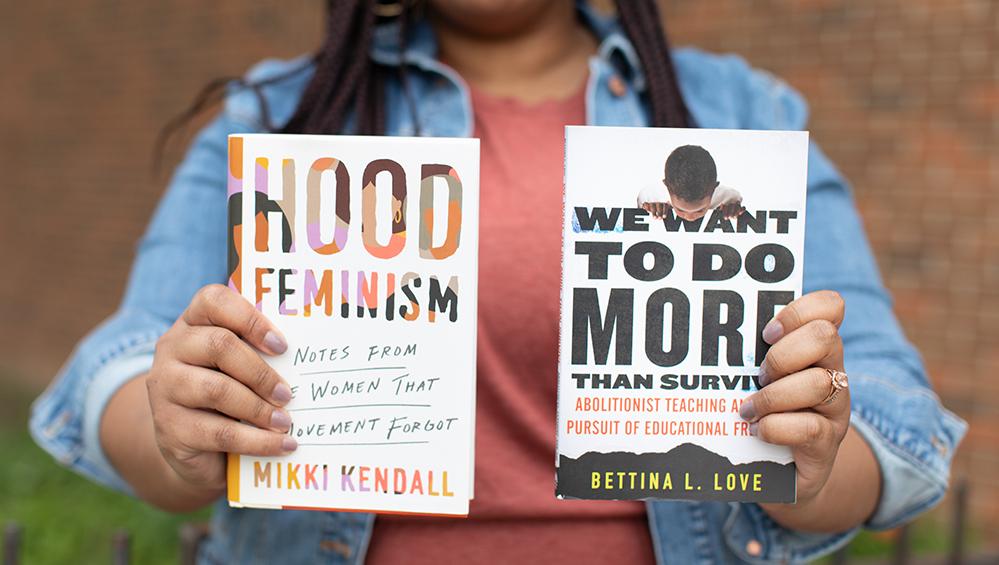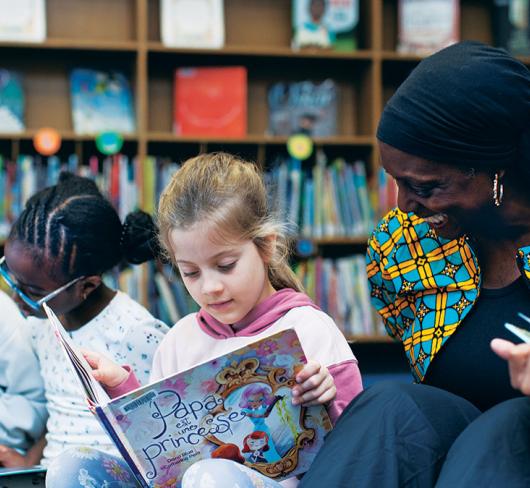
Decoding the Dress Code: Unmasking Inequities in School Dress Code Policies
In December 2020, an educational assistant in Treaty 4 territory told a 10-year-old Nakawe-student that her ribbon skirt was not formal enough for their formal wear day at school. In January of the same year, Texas teen DeAndre Arnold was suspended for wearing locs that did not comply with his school’s dress code; he was told he would not be able to walk the stage at graduation unless he cut them. In March 2021, a female student in Kamloops, B.C. was sent home after her outfit was deemed lingerie by her teacher. The outfit in question was a knee-length black dress with lace trim at the chest worn over a white turtleneck. A month later, the French senate voted to amend a proposed law banning girls under 18 from wearing hijab under the pretense of women’s empowerment. It’s easy to look at these instances of egregious dress code policing and think that our institutions would never stoop so low, but the seemingly innocuous dress code rules in our public schools, designed to maintain a positive learning environment, say more about dominant beliefs in the public education system than we realize.
I remember being in Grade 8, wearing a new Allen Iverson jersey dress I had just gotten. I paired it with pigtails, a white visor and cute white sneakers. I felt every bit as cute as I should have, but upon entering school, I was told to put on pants if I wanted to continue wearing my jersey dress (it did in fact touch my fingertips.) and to take off my hat. I watched another girl with a slimmer physique in her sun dress that day. It was the exact same length as my jersey dress; she didn’t face one ramification for her choice in attire. This wasn’t the first time my clothing would be a topic of discussion and certainly not the last. Fifteen years later, I watched the same narrative play out in front of me as a teacher. A Black female student wearing shorts was walking down the hall in near proximity to her slender white peer. A male staff member tapped me on the shoulder and asked if I could have a conversation with the Black girl about her choice of shorts. I was mortified. I had no idea what to say to this young girl whose outfit reflected the summer heat (need I remind you that our schools are not air conditioned?). In that moment, I realized that for all the equity and inclusive education work we’ve done and with all the culturally responsive teaching we’ve raced to consume, we’ve seemingly neglected to take a look at these rules that govern our profession and guide our frameworks for educating youth.
If the pandemic has taught us anything about school culture and climate, it’s that the buildings we hold dear are much more than places of learning. They are hubs for creativity, socialization and self-expression. I would go a step further and say that true learning does not occur until we’ve actualized students’ hierarchy of needs and, while style of dress may seem trivial amongst the need for food, water, safety and belonging, these esteem needs are particularly important for a young person’s sense of self. As educators, we know that motivation amongst students increases as their basic needs are met, and isn’t the goal of education to motivate our students to be self-starters and develop a genuine love for learning that lasts far beyond our classrooms? I want my students to want to come to school every day, or at least most days. I want them to be excited about being in my classroom because it feels like a place of support and understanding, and I can’t foster that type of environment if my job revolves around policing my students’ clothing choices. Dress codes are about more than just physical dress; they are an equity issue that unfairly targets equity-seeking groups especially in relation to gender and race. Dress codes are part of the hidden curriculum we teach students – the values and perspectives we inadvertently pass on to them as part of school culture. They explain to students what is expected of them while creating educational norms. But what are dress codes actually saying about our values?
1. Female bodies are inherently sexual and need protection. In referring to appropriate dress, clothing deemed too revealing like spaghetti-strap tank tops have been labelled distracting. Distracting for whom? We are teaching our young girls and non-binary and gender non-conforming students that they have no right to bodily autonomy and that the gaze of peers is more important than their own self-worth. I have an 8-year-old daughter who often wears spaghetti-strap dresses; there is nothing sexual about her appearance and the fact that it could be labelled as such troubles me. We are putting value judgements on articles of clothing that are rooted in historical narratives of women’s roles in society where modesty is the only form of femininity acceptable. In regulating the “right type of skin” to show, we are enforcing a type of girlhood that is solely rooted in purity, innocence and naivety, which in turn vilifies a girlhood rooted in strength, independence and free thought. To be clear, I’m simply articulating that we need to give our students the ability to choose what is right for them without forcing them to believe that their clothing choices create labels they have to adhere to for a lifetime.
2. Racialized bodies are dangerous. Let’s chalk this one up to a policy I never quite understood. Removing your hat indoors is a sign of etiquette, a colonial concept that began in French courts in the 1600s, and yet something we’ve carried well into the 21st century. The argument for hats off in buildings along with hoodies has been for identification purposes, which makes complete sense in hallways and other common areas. But what about in classrooms? Educators have argued that they need to be able to see a student’s eyes, so what if a student wears their baseball cap backward and where does that leave toques, bandanas and durags? Bandanas, head wraps and durags have been linked to gang activity but if we’re following that logic, why haven’t we banned particular colour outfits or coloured headbands, etc.? Looking specifically at headwraps and durags we can see a prioritization of Eurocentric history over Afrocentric history. Did you know that durags and headwraps are an essential part of Black history? They have been used throughout history to protect hair and maintain hairstyles. However, instead of seeing a 12-year-old Black boy with a desire to maintain his waves, we’ve weaponized the durag against Black bodies.
3. Only skinny bodies are worthy of being seen. No two bodies are alike and never is this more apparent than in the way a particular article of clothing fits one body vs. another. A student with a skinny and rectangular body shape can wear a pair of shorts that reach the fingertip length usually required by schools, but that same pair of shorts on a curvier body are labelled inappropriate. The same can also be said for fitted shirts; fitted shirts are generally fine so long as they cover up any bodily outlines. Students with fuller figures (even as young as 6) have been told that their mere appearance is inappropriate because of earlier development than their thinner counterparts.
A GTA board’s dress code states that “the standards for dress at the school are based on common sense and are intended to support the comfort, safety and modesty of all students. There is a strong relationship between neat, clean and appropriate clothing and a positive learning environment.” It is important to problematize the association between neat, clean and appropriate clothing and a positive learning environment. This connection privileges those from more affluent backgrounds. It is also important to draw attention to the idea of common sense as it does not take into account culturally specific nuances that may not be part of the Eurocentric Canadian mosaic.
I don’t believe that dress codes were put into place to be a discriminatory practice. I understand that they have been designed to protect the best interests of students. They are designed to be neutral so that every student has a set of rules that doesn’t unfairly target them, but what we know both about teaching and the rules that govern the profession is that nothing is neutral or apolitical. Every rule comes with its own biases and lived experiences and all are wrapped up in historically colonial narratives.
Let’s look at the consequences for wearing clothes that are deemed inappropriate:
- A change of clothes from the student’s own collection – likely into gym clothes.
- Lost and found clothing – I can’t even begin to tell you how demeaning this is.
- Sent home from school – removing a child from school surely isn’t beneficial to their learning.
If we’re in the business of building self-esteem and helping shape critical thinkers, how can we move toward that with punitive measures for students exercising their right to self-expression? In 2019, the Toronto District School Board implemented a new Student Dress Policy, going so far as to replace the title of the policy from Appropriate Dress Policy to Student Dress Policy acknowledging the long history of marginalization and inequitable practices that resulted from biases in previous dress code policies. One of the most meaningful pieces of the new dress code was the inclusion of student voice in the development of the new plan. If we are truly looking to move toward real equity and inclusion, we need to recognize that the idea of authoritarian decision-making is a function of colonialism and white supremacy. True culturally responsive pedagogy is rooted in community and collaboration.
I am not naïve. I understand that for all the changes I wish to see in our schools there is a long-standing argument for preparing students for what we’ve deemed the real world. Will student X be able to walk the streets in a short skirt and spaghetti strap tank top and not be objectified? Will student Y wear a durag and not be unfairly stopped by police? Will student Z wear a crop top and not have people turn up their nose? Not at this moment, but like all of us who now understand that school is a microcosm of the world while also understanding that growth and change happen as we learn, we can be honest about where our values are situated in this moment while trying to encourage liberated young humans. Remember, recess and nap-time aren’t functions of adult environments, but we encourage them in young students anyway. Let’s give students the grace to develop while still remaining children, while they have the ability to do so.
How can teachers make a difference in creating inclusive environments for their students especially around dress codes?
- Take anti-racist and anti-bias (ABAR) training seriously. ABAR sessions help us unpack our own biases and learn the ways in which we unintentionally cause harm to others. Many ABAR trainings are also culturally specific and allow us to learn norms and customs for cultures outside of our own making us less likely to impose colonial norms on our students.
- Spend time getting to know your students. The more you know about your students, the more their clothing choices make sense to you. What are they trying to say about themselves with the clothing they’ve selected? In understanding your students better, you’ll feel less inclined to judge the attire they’ve chosen.
- Have frank conversations about gender norms and binaries. Explain to all students that how someone chooses to express themselves through clothing is a reflection of many parts of their identity but is not the only piece of their identity that matters.
- Before you act on an impulse to critique a student’s attire, ask yourself if their clothing is truly harmful. Does it portray offensive, violent or otherwise harmful visuals that negatively impact school environment?
- Since many dress codes are school specific, consider including students in the creation of new dress code policies (even younger students).
Alyssa Gray-Tyghter is a member of the Peel Teacher Local.

